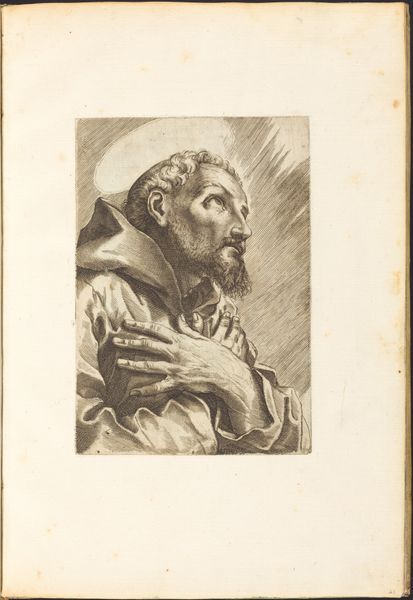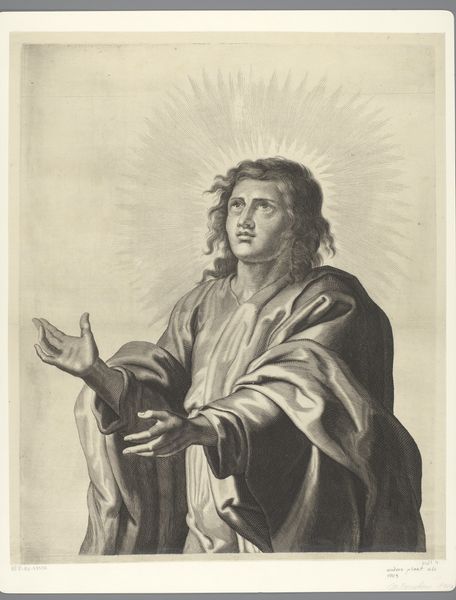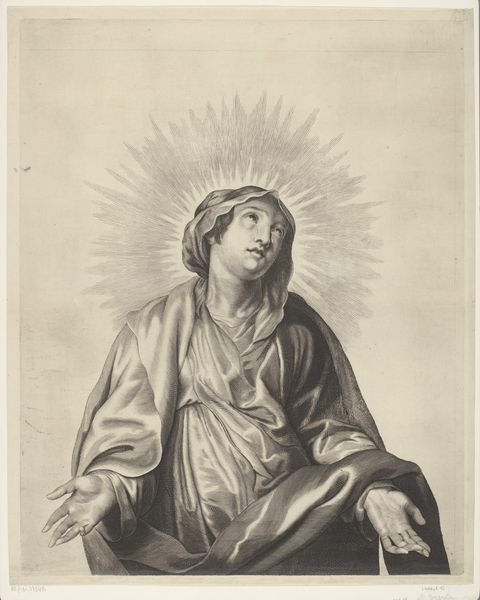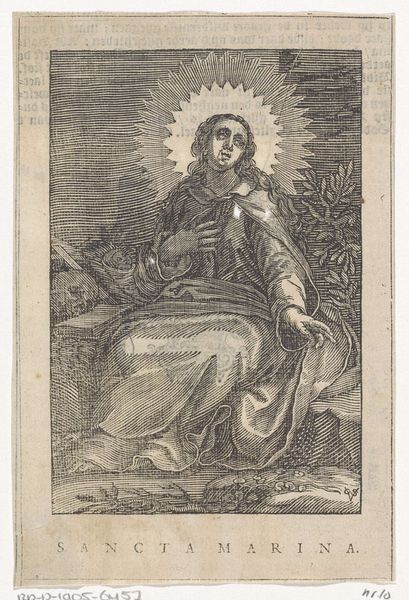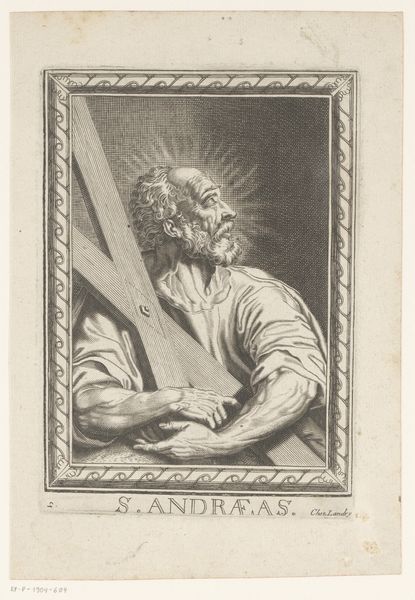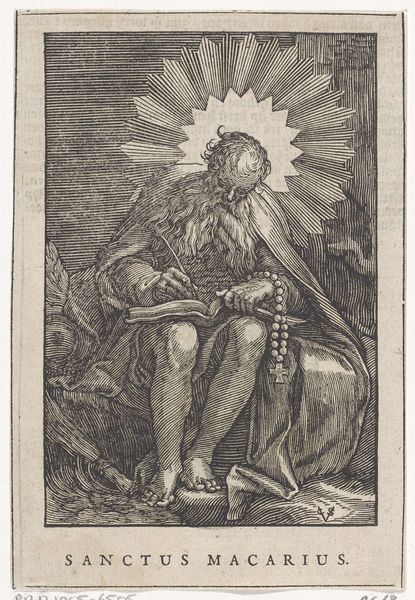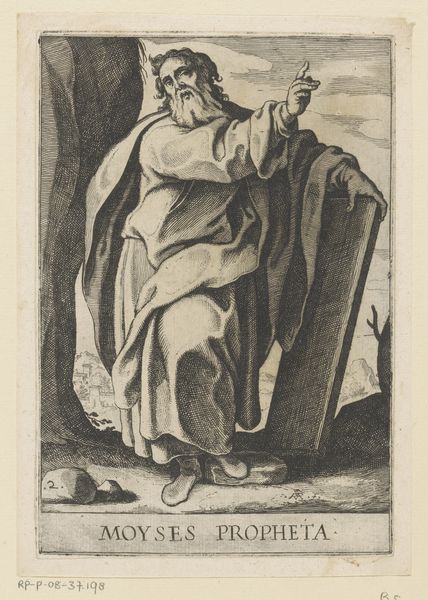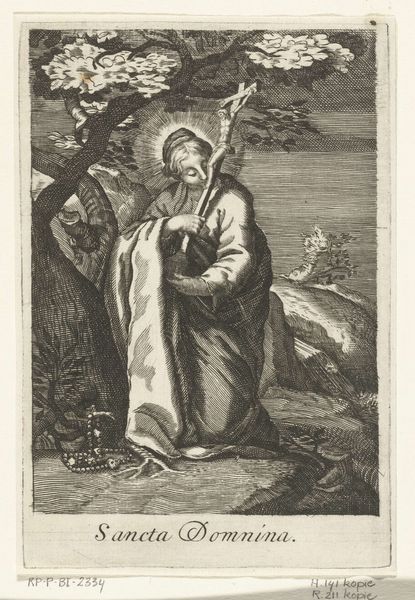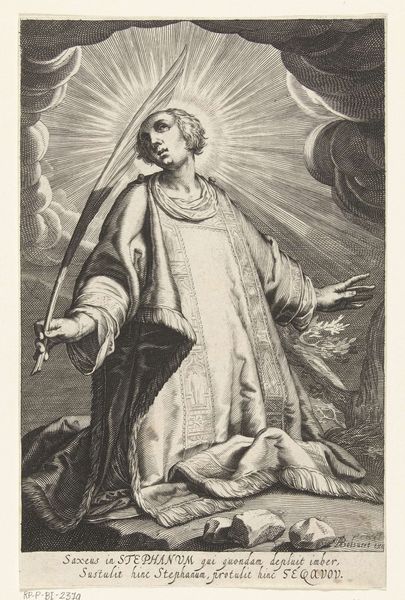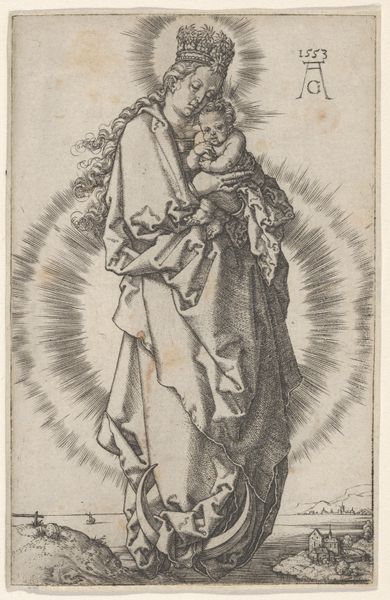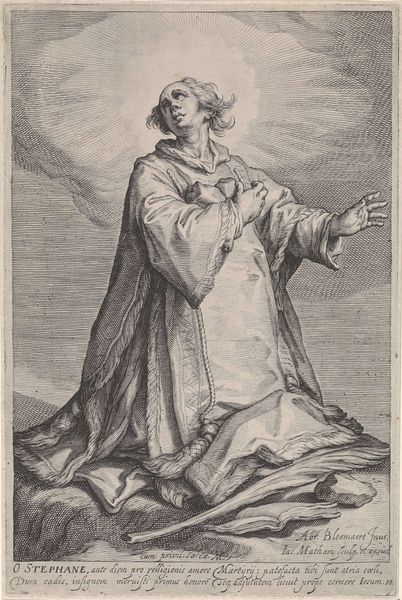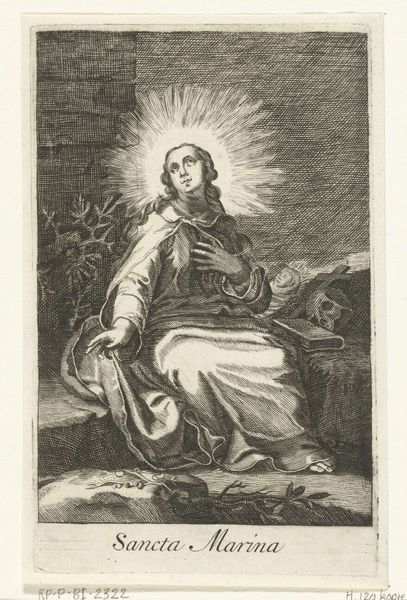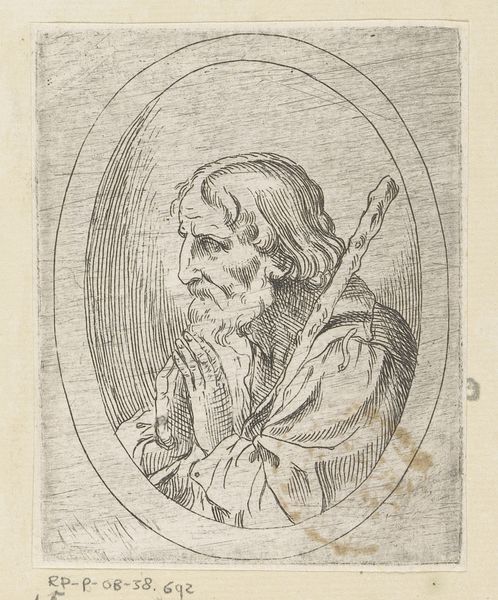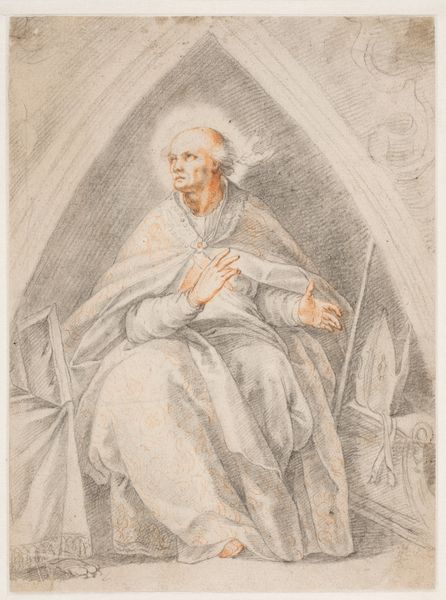
print, engraving
#
portrait
#
baroque
# print
#
old engraving style
#
figuration
#
19th century
#
line
#
history-painting
#
engraving
#
realism
Dimensions: height 166 mm, width 119 mm
Copyright: Rijks Museum: Open Domain
Curator: Looking at this engraving, one can't help but notice the palpable sense of devotion emanating from the figure. It's a portrait of St. Bartholomew, dating back to the period between 1640 and 1701, crafted by Pierre Landry. Editor: Immediately striking is the contrast! The crispness of the engraving lines paired with that rather gaunt face, and then offset by that dazzling halo effect above. There’s a textural tension in its making; one feels the artist’s process of mark-making very directly. Curator: Indeed! Landry’s medium is fascinating here. This wasn't a quick process. The time, the skill involved in producing such intricate detail... the transfer of image to metal, then the final print. What sort of workshops were common for this level of engraving at the time? Were there assistants? How was Landry perceived—as a craftsperson or something else? Editor: Symbolically, I’m drawn to his halo, radiant, yet not obscuring him completely. He also holds something close to his chest. And that book, held open. The engraving is rich with references to faith, intellect, perhaps martyrdom, certainly of knowledge. I am curious if Pierre Landry made multiple images of Saint Bartholomew and about this subject at the time! Curator: It makes you consider the role of images and art, particularly engravings, in disseminating religious belief at this point. Engravings allowed images to reach a far wider audience. Consider the cost! Was this widely produced for an elite clientele, or intended for more general consumption? Editor: Exactly! What visual cues helped communicate holiness and martyrdom to the intended viewers of Landry’s time, and what parts of that visual language endure today? Even outside religious circles, the image feels potent still. What does it mean that he's depicted in such a pensive, almost suffering light? Is it a universal visual representation of deep suffering that evokes feeling in a viewer today. Curator: Such details invite an entire history of printmaking practices! But, yes, his gaze really captures a state of internal reflection, so perhaps even an invitation of sorts! Editor: Absolutely! An opportunity for introspection.
Comments
No comments
Be the first to comment and join the conversation on the ultimate creative platform.
